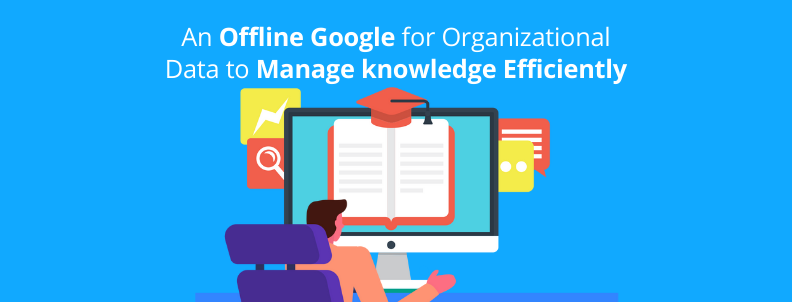As a researcher, What is one of the biggest challenges you face in your organization?
We asked this question internally and to some of our clients, and here’s one of the most common problems.
We spend a lot of time sifting through information that already exists within the organization. And sometimes the internal knowledge of all the past works gets overlooked and we end up working on similar projects over and over.
Researchers would confirm this is a bog-standard yet prevalent problem many of them face. Now, knowledge bases and management tools exist to help teams avoid duplicate work and have better access to their organizational knowledge. However, each organization has its unique way of institutionalizing its understanding. And even though there are dozens of tools to create internal knowledge bases in the market, finding that exact gear that could fit in the knowledge-generating machine your organization is in can be pretty good!
We’ve got to solve that problem. We created BOS, FIT, Examiner Analysis, Patent ranking engine, and various other tools for the exact reason. Help design a perfect solution that can solve the user’s biggest problem.
When the survey results returned, we knew we had to solve this problem too. This resulted in the creation of Spotter. We created Spotter as an internal knowledge base tool explicitly made for keeping and indexing different types of data and content generated by big research teams like ours.
What is Spotter, and how is it different from other knowledge management tools?
In simple words, Spotter is designed to work as an advanced document search engine.
You can think of it as Google for your organizational data. You simply enter a search query, and it goes through all of the available information within your organization’s data to fetch the most relevant results.
What makes it more efficient than an essential internal knowledge base?
The Spotter interface is built on top of an advanced patent engine developed in-house at GreyB. This engine adds an intelligence layer to the tool, making searching and analyzing patent data a breeze.
This patent engine tries to extract essential sections from the patent documents and highlight references to other applications. This can help save a lot of time while performing the analysis and find ‘Tier I’ results from the stack of documents already analyzed in the past within minutes.
Spotter uses state-of-the-art OCR technology to make the text inside images searchable that too in multiple languages (German, Chinese to name a few). It also provides offline multi-linguistic query suggestions and translations for scenarios where people from remote locations with different native languages work together in an organization.
When it comes to searching features, apart from the simple AND, OR & NOT operators, it supports advanced text-based operators as well, such as in-sentence searching using the ‘S’ operator and near word searching using ‘D’ and ‘W’ operators.
There’s all this and a lot more that Spotter can do. We have used this tool a LOT internally while working on our projects. Let me take you through one such recent instance.
How did Spotter help Shelza invalidate a patent?
Working on thousands of research projects for a decade has led us to explore many tech areas in depth. Thus, it’s not uncommon for us to have Deja-Vu feels when working on tech areas we have circled through in the past.
Something similar happened to my colleague Shelza while working on an invalidation project for a client. The patent was related to the Safe driving mode feature of a phone.
Crux: When the driver starts the car, their phone is automatically put to safe mode to pause any notifications to avoid distracted driving.
Shelza had a hunch that someone in GreyB had already worked on a similar concept – ‘distracted driving. ‘ She was not expecting a bang-on result but figured she would find a few good leads – like any close patent or company she could track – that would further advance her search.
She logged into Spotter, entered ‘distracted driving’ in the search bar, and let the tool get to work. Within seconds, she got around 49 results filtered from tens of thousands of previously analyzed documents.

How did it turn out?
Not only was Shelza able to shortlist a relatively minor set for analysis, but she also found a Tier I reference (previously analyzed by a different team) in the first 10 documents. Spotter highlighted the relevant text right there, and she immediately picked the result.
It was our collective aha! Moment. Imagine the client’s surprise when we got him a Tier I reference on the first day of the search. We had earned a repeat client that day, all thanks to Shelza’s thoughtfulness in looking up the keyword on Spotter and the advanced search and index features of the Spotter tool.
Spotter’s an interesting tool – want to get it for your company?
We built Spotter to solve a pressing problem, not just ours but of many research teams who produce a ton of research work in a company.
Spotter not only helps us double-check whether we have worked on tech before, but it also helps us extract leads to direct our research strategy using past data. With a tool like that in hand, inventors, patent attorneys, and R&D departments can be empowered to make informed strategic decisions while avoiding expensive pitfalls and maximizing the commercial value of innovation.
Having an internal knowledge base like Spotter gives you access to all the knowledge your firm produces – all the documents, papers, images, reports, and files, at your fingertips.
Want to check out Spotter and see how it could benefit your organization? Fill out the form below, and we can prepare a demo setup. If you have any other questions, feel free to message us here.
Authored by: Sarthak Jain, Product Development.




